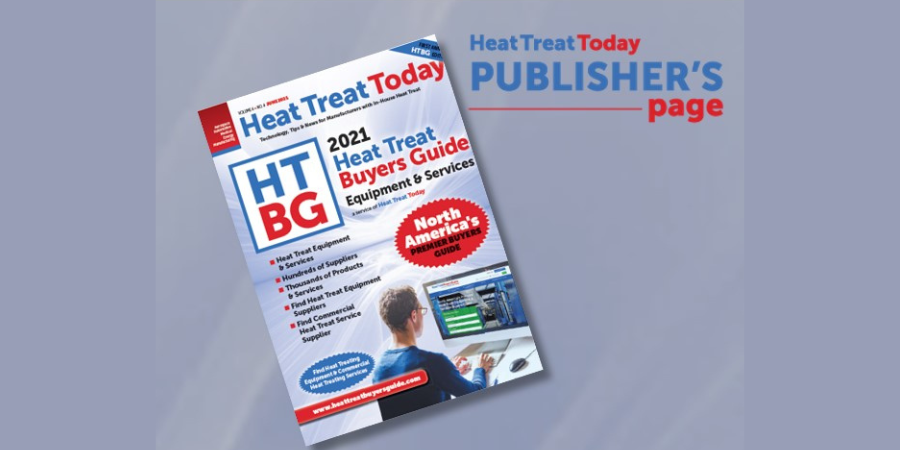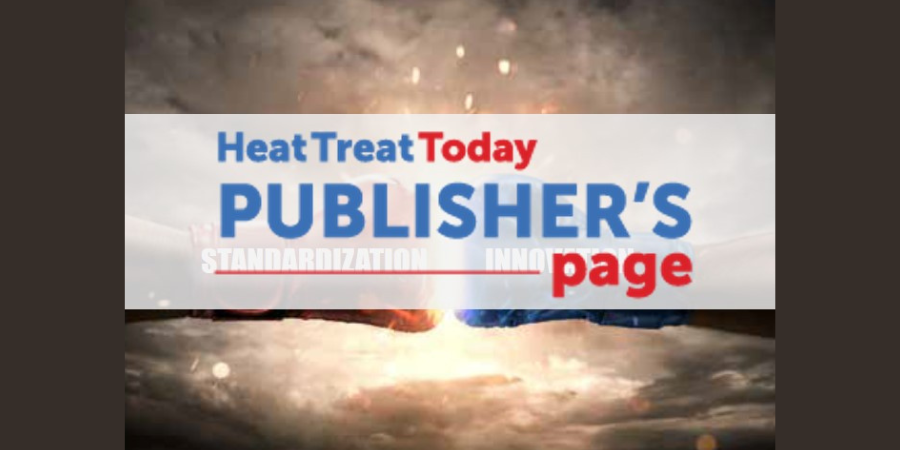Letter from the Publisher: Supply Chain of Thankfulness — No Shortages Here
![]() Heat Treat Today publishes eight print magazines a year and included in each is a letter from the publisher, Doug Glenn. This letter first appeared in Heat Treat Today's December 2021 Medical and Energy print edition.
Heat Treat Today publishes eight print magazines a year and included in each is a letter from the publisher, Doug Glenn. This letter first appeared in Heat Treat Today's December 2021 Medical and Energy print edition.

Publisher and Founder
Heat Treat Today
It’s December. Another year is mostly in the rearview mirror — unbelievable! Second only to COVID-19, America’s embattled supply chain has been top-of-mind for pretty much everyone in the North American heat treat industry. Just yesterday, a frantic heat treater called me asking where he could get a certain type of quench fluid necessary for aluminum processing. His go-to supplier ran out and he was in dire need of enough fluid to completely refill his rather large quench tank. It’s not good when the shelves are bare at the industrial grocery store.
The supply chain troubles will most likely not end soon. After shuttering the economy for nearly a year, we should not be surprised.
Nevertheless, as 2021 winds down, there is MUCH for which we should be thankful.
Thankful for Ancestors Who Fought to Defend Freedom
You’re reading this in December; I’m writing in mid-November, just prior to the oft-forgotten holiday of Thanksgiving. In fact, just yesterday was Veterans Day here in the United States and Remembrance Day in Canada — a time to remember and give thanks for the sacrifices made by men and women who fought to defend their and our freedom. When we stop and think about all the freedoms that we continue to have because of their sacrifice, we should be immensely thankful. Beyond being thankful, I hope many of us will be as brave as them and continue the fight to keep us free from internal and external enemies . . . of which there are many.
Most of the time, defending freedom doesn’t look like war or armed combat. Most of the time, it simply involves saying “no” to the little intrusions that well-intended civil authorities attempt to press on us. It’s not a popular position to hold in 21st century America, but our Founding Fathers, who had a much better sense of the latent evil in ALL men, had a healthy skepticism about those in authority. Get this… they understood that ALL men were sinners (evil by nature) and would tend to use any power granted to them for their own good and at the expense of others. I’m thankful for people who still think like our ancestors and are willing to sacrifice so much for our freedoms.
Thankful for Colleagues and Industry Friends
I’m also very thankful for colleagues and friends in the North American heat treat industry who make being in this industry so enjoyable. There are a lot of very good people in this industry. As I tell many newbies, “There are just a lot of very nice people in this industry. You’ll fit right in!” There are countless numbers of you who invest time and energy into helping others. One of my favorites is Mike Shay. Mike is no longer active in the industry, but for years, he worked for Hauck Manufacturing and was also a fully invested Scout leader. Mike spent untold hours helping young boys mature into thoughtful, freedom-loving men. Mike is just ONE example. There are MANY more.
Although supply chain issues will undoubtedly continue, the one supply chain that will never run dry is the supply chain of thankfulness. Thank you for being a Heat Treat Today reader. And thank you for the time you invest helping others enjoy their time in this great industry. Happy Thanksgiving, Merry Christmas, and Happy New Year! The Heat Treat Today team wishes (and prays) for a good and prosperous 2022 for each of you.
Letter from the Publisher: Supply Chain of Thankfulness — No Shortages Here Read More »

































